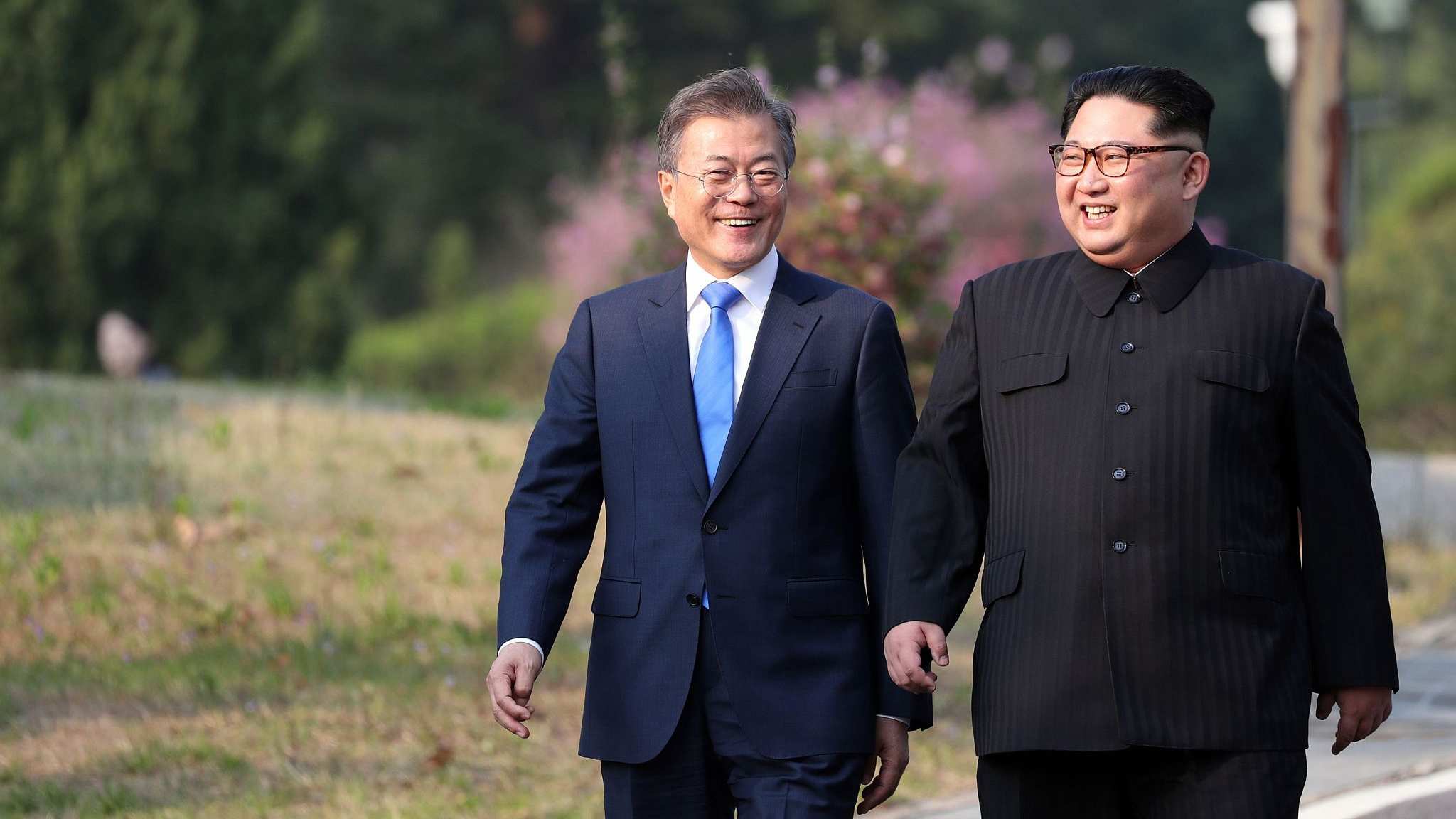Sixty-five years after the Korean War ended with a ceasefire, efforts are underway to finally reach a peace agreement between the Democratic People’s Republic of Korea (DPRK) and the Republic of Korea (ROK), following a historic summit in April between the two countries' leaders.
But how much progress has been made so far and what role can China and the US play?
CGTN Digital spoke to Megan Cansfield, geopolitics analyst with Beijing-based research firm China Policy, to get some insight.
CGTN Digital: How important was the June 12 summit between US President Donald Trump and DPRK leader Kim Jong Un, with regards to peace on the Korean Peninsula?
Megan Cansfield: The Trump-Kim summit produced more of a statement of intent than an actual concrete plan for progressing towards the goal of denuclearizing the Korean Peninsula, and the terms of the joint statement were non-binding and vague enough to potentially allow for mismatched interpretations from the two sides along the lines of their own interests.
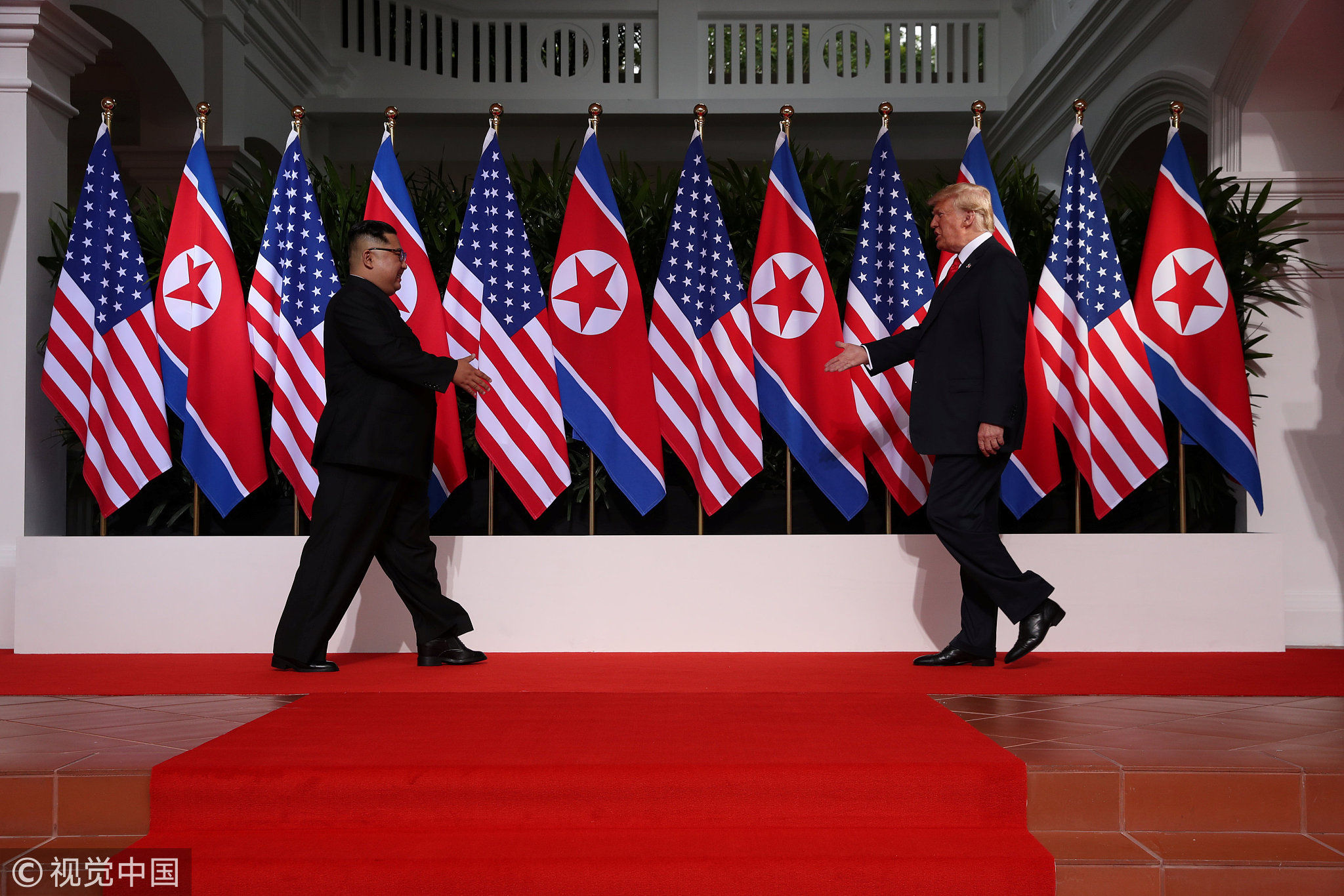
US President Donald Trump and DPRK leader Kim Jong Un meet in Singapore, June 12, 2018. /VCG Photo
US President Donald Trump and DPRK leader Kim Jong Un meet in Singapore, June 12, 2018. /VCG Photo
That being said, in terms of the broader picture of building conditions and precedents with the potential for genuine breakthroughs down the line, the Trump-Kim summit and subsequent DPRK-US negotiations do show some progress.
The big change is the US's (apparent) new willingness to engage with the DPRK and reach a formal resolution of the nuclear issue, where negotiation was off the table before.
This was a major obstacle in past decades, so US participation alone does constitute progress versus past years or even months ago.
CGTN Digital: Will this momentum of cooperation continue?
Megan Cansfield: Assuming current conditions are held equal (and provided there are no surprises such as a sudden Trump pivot), then there shouldn't be any reason why inter-Korean talks won't proceed expeditiously.
Both parties have something to gain from the process. For Kim, it boosts his personal and his regime’s image by playing the peacemaker role. For ROK President Moon Jae-in, it fulfills his election promise of better relations with the DPRK.
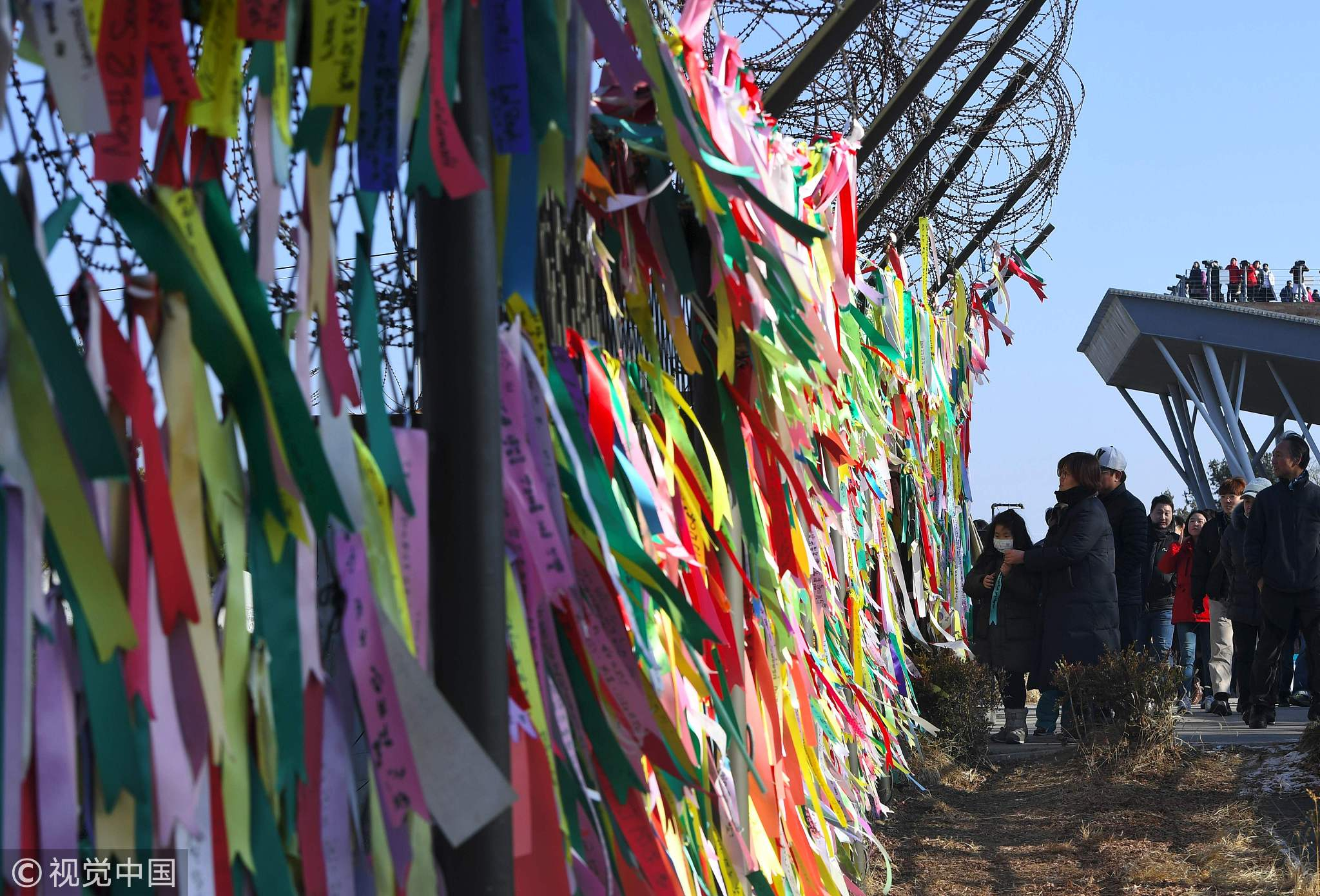
Ribbons with inscriptions calling for peace and reunification at the Imjingak peace park near the Demilitarized Zone (DMZ) dividing the DPRK and ROK, January 1, 2018. /VCG Photo
Ribbons with inscriptions calling for peace and reunification at the Imjingak peace park near the Demilitarized Zone (DMZ) dividing the DPRK and ROK, January 1, 2018. /VCG Photo
CGTN Digital: How soon might we see a peace deal? Could one be signed by the end of the year?
Megan Cansfield: It’s possible, but not likely. A formal treaty would depend on not just the DPRK and ROK, but must also be signed by China and the US as both were signatories to the 1953 Armistice. Thus, a treaty would have to account for both US and Chinese interests to a sufficient degree to convince both to sign.
Whether all parties can arrive at such terms will depend on how much the US and DPRK are each willing to put on the line, and many issues of central importance to the treaty are still up for debate.
Given the complexity of such questions, I'm almost positive that it will take a much longer time frame than four months to work through these challenges and account for a balance of all parties' concerns in drafting a viable peace treaty.
CGTN Digital: What are the main issues that need to be resolved?
Megan Cansfield: 1. Security guarantees to the DPRK. The US pledged this as part of the Singapore Summit joint statement, but no specifics were given.
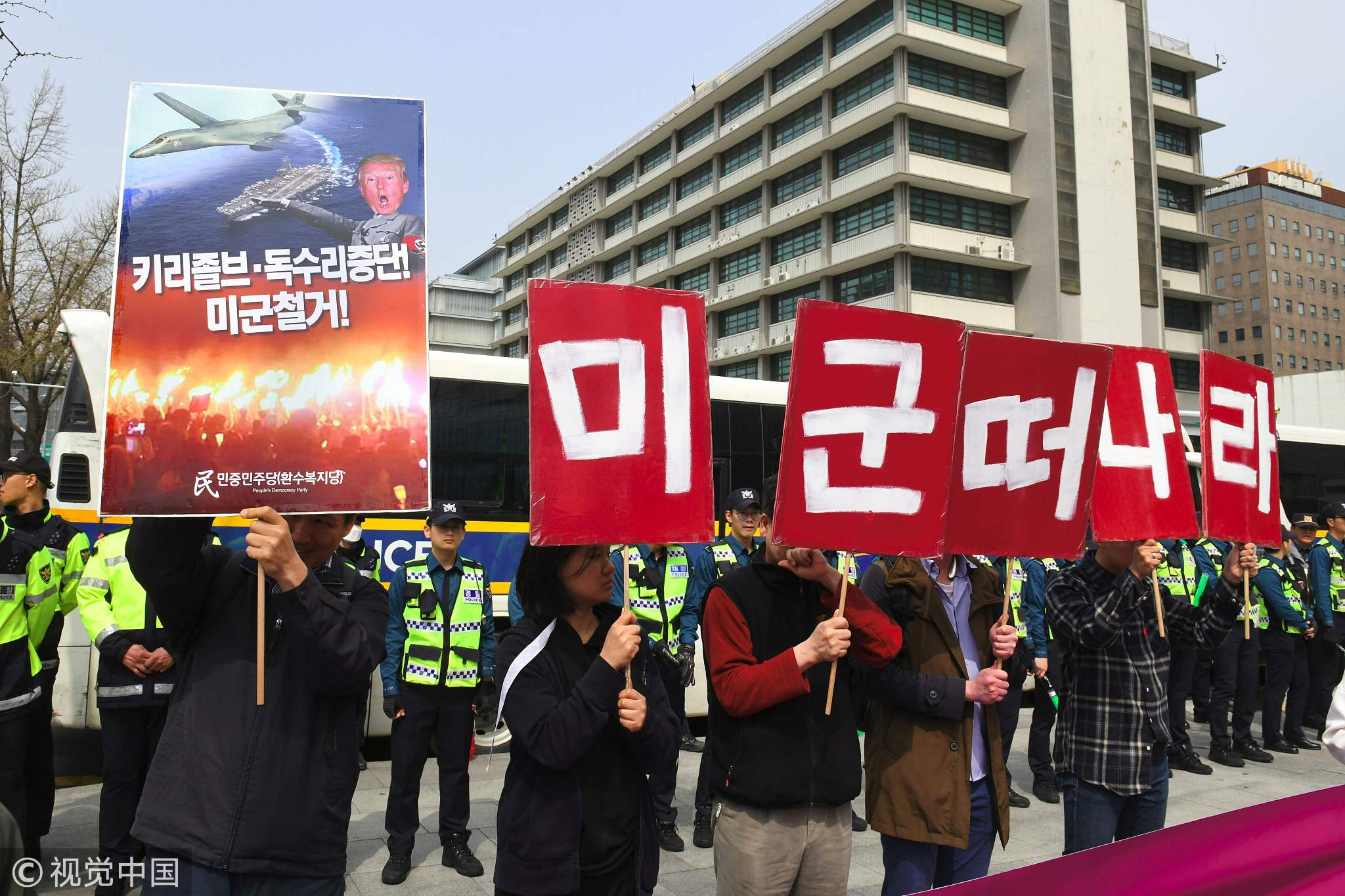
Protesters hold placards reading 'Withdraw US troops!' during a rally denouncing the planned annual joint military exercise near the US embassy in Seoul, March 31, 2018. /VCG Photo
Protesters hold placards reading 'Withdraw US troops!' during a rally denouncing the planned annual joint military exercise near the US embassy in Seoul, March 31, 2018. /VCG Photo
2. US troop presence on the Peninsula. Trump has made statements on this but no concrete commitment to remain or withdraw yet. Related to this is also the question of the future of the US-ROK alliance.
3. Alignment of the DPRK or the Korean Peninsula in the event of reunification. Should it have permanent neutrality as a middle power between US and Chinese spheres of influence?
4. Future of the DPRK's nuclear weapons. Is negotiating a complete, verifiable, and irreversible denuclearization feasible? On what timeline?
The security-related issues are of primary concern and will have to be addressed before all parties can progress to other issues: DMZ armament reduction, which could be an intermediate trust-building step with an eye on follow-on reductions in nuclear/military capabilities; family reunions; Japanese citizen abductions; US Korean War veteran remains repatriation; and likely also some kind of economic development assistance for the DPRK.
CGTN Digital: How important has China’s contribution been so far?
Megan Cansfield: China's actions in recent months have been critical in bringing about the conditions under which the peace talks could start and move forward, namely UN sanctions compliance and economic pressure on the DPRK to a greater extent than ever before.
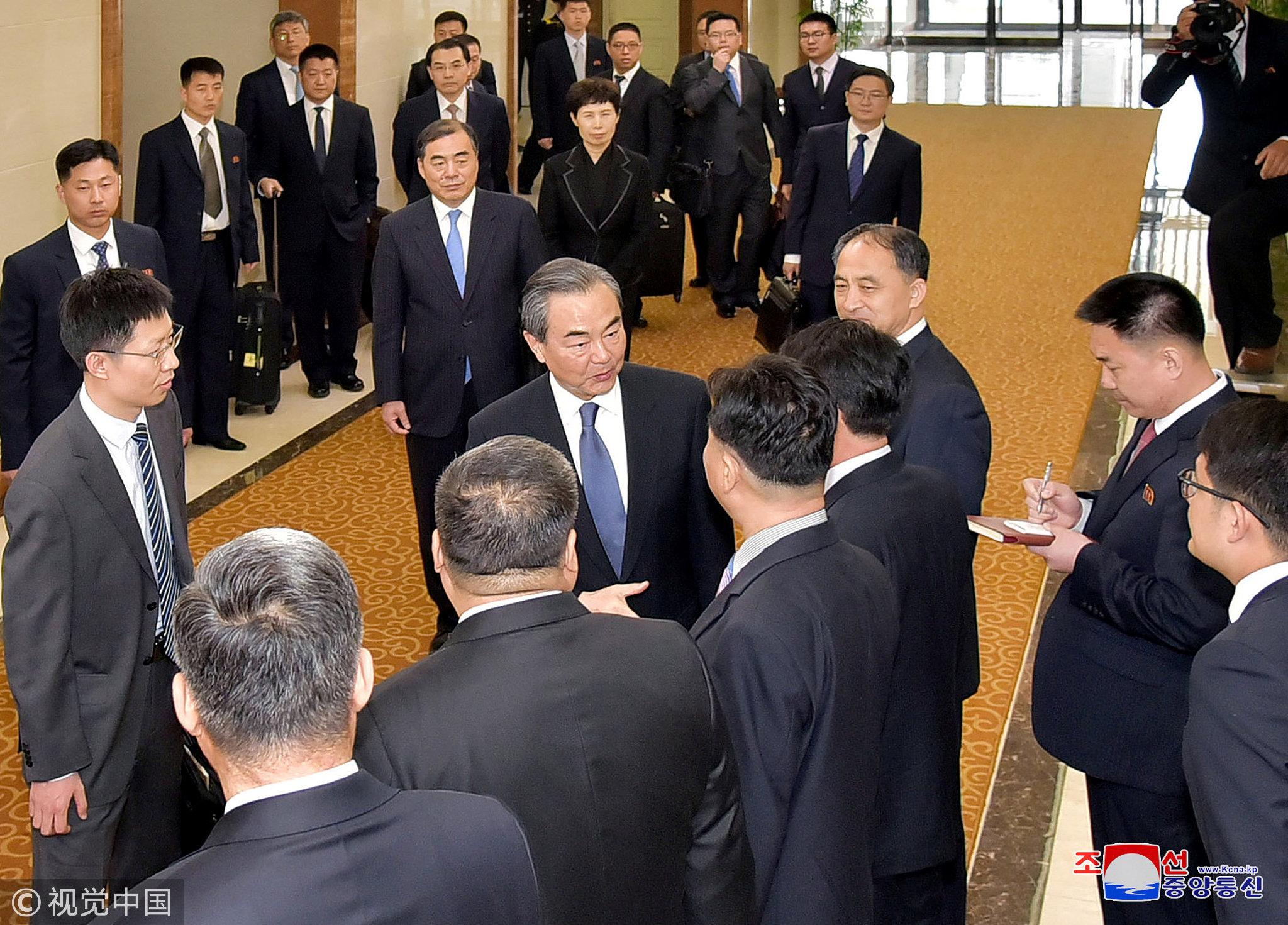
Chinese Foreign Minister Wang Yi during his visit to Pyongyang, DPRK, May 3, 2018. /VCG Photo
Chinese Foreign Minister Wang Yi during his visit to Pyongyang, DPRK, May 3, 2018. /VCG Photo
The DPRK also likely interpreted China's signals that it would not necessarily give unconditional support, so this likely helped prompt the diplomatic outreach leading to peace talks too.
CGTN Digital: Shouldn't peace on the Korean Peninsula be a matter for the DPRK and ROK alone to resolve?
Megan Cansfield: The DPRK and ROK can't solve the issue themselves due to the need for US and Chinese signatures on the final treaty, and the reality that a peace treaty would likely be untenable if devised independently of seeking balance within the larger US-China regional rivalry context.
It is most definitely not a DPRK-ROK only matter.
CGTN Digital: So what role should the US and China play in the peace process?
Megan Cansfield: The US must be involved in peace talks because the nuclear issue is essentially a DPRK vs. US-ROK-Japan alliance issue. With the US as its main perceived adversary and threat, Pyongyang seeks a peace treaty not just with Seoul but with Washington.

US Secretary of State Mike Pompeo (R) and Kim Yong Chol (L), a top DPRK official and former intelligence chief, arrive at Park Hwa Guest House in Pyongyang, DPRK, July 7, 2018. /VCG Photo
US Secretary of State Mike Pompeo (R) and Kim Yong Chol (L), a top DPRK official and former intelligence chief, arrive at Park Hwa Guest House in Pyongyang, DPRK, July 7, 2018. /VCG Photo
China can help to shape treaty criteria in line with regional interests. It can also use its unique relationship with the DPRK to its advantage as it's definitely more trusted by Pyongyang than the US.
So China could continue bilateral talks with the DPRK, independent of the peace talks. That could increase the likelihood of a peace deal's long-term sustainability and nudge the DPRK down the path of peace and denuclearization.
Regional strategic issues and core interests for both China and the US are at stake on the DPRK, and often at odds. US-China compromise will be essential in crafting a treaty.
The US may not want to but realistically it will have to sufficiently account for Chinese interests for any resolution to be acceptable for China's signature. And the US will have to ensure that it doesn't maximize its own interests on the DPRK at the expense of China's, with the potential of heightening China's security concerns, with detrimental effects for bilateral and regional relations that will hurt the US in the end too.
(Top picture: DPRK leader Kim Jong Un (R) and ROK President Moon Jae-in (L) walk together at the truce village of Panmunjom, April 27, 2018. /VCG Photo)

